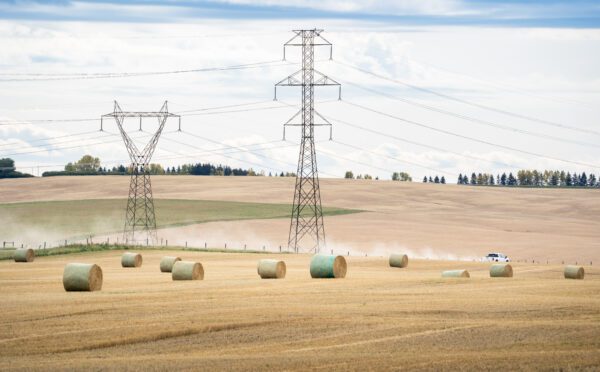
This post looks at recent policy and legislative developments related to the regulatory framework for carbon capture, utilization and storage (CCUS) in British Columbia. It also provides an update regarding carbon sequestration hubs in Alberta since our last post about them in April 2022.
CCUS developments in British Columbia
As discussed in our most recent post, B.C. passed the Energy Statutes Amendment Act, 2022 [PDF] (the Act) on November 24, 2022, to change legislation governing energy resources in the province. The Act has already amended the Petroleum and Natural Gas Act[1] (PNGA) to clarify aspects of the regulatory framework for CCUS in B.C., including the tenure required for CCUS projects and, among other things, renames the B.C. Oil and Gas Commission as the British Columbia Energy Regulator.
The amended PNGA includes requirements for the rights that must be obtained in order to explore for, access, develop and use underground storage reservoirs to store or dispose of carbon dioxide (CO2). While the rights that must be obtained for such purposes can be difficult to understand in the PNGA itself, B.C.’s Ministry of Energy, Mines and Low Carbon Innovation (the Ministry) has published the Guidance for Obtaining and Utilizing Subsurface Tenure for Carbon Dioxide Storage [PDF] (the Guide), which is clearer in this regard.
The Guide clarifies that there are two types of tenure that can be obtained to store or dispose of CO2:[2]
- a petroleum and natural gas (PNG) lease issued under Part 6 of the PNGA or section 71 of the PNGA
- a storage reservoir licence issued under section 130 of the PNGA
A PNG lease permits the holder to use a storage reservoir to store or dispose of natural gas and other substances associated with PNG operations, including CO2 produced from a well or captured at a PNG facility.[3]
By contrast, a storage reservoir licence permits the holder to use a storage reservoir to store or dispose of CO2 from any source (i.e., not just CO2 associated with PNG operations). The holder of a PNG permit, drilling licence or lease may apply to the Ministry for a storage reservoir licence. Alternatively, without first obtaining such PNG rights, or if more information is needed to confirm that an underground reservoir can be used to store or dispose of CO2, an exploration licence can be obtained under section 126 of the PNGA, after which a storage reservoir licence may be applied for in the same way.[4]
More information about PNG leases, storage reservoir licences and exploration licences is provided in the Guide, including information about the process for acquiring them.[5]
Carbon sequestration in Alberta
In April 2022, we discussed the six proposals the Alberta government selected for further evaluation as a result of its first request for full project proposals (RFPP) to develop and operate carbon sequestration hubs in the province. Since then, all six proposals have entered into evaluation agreements with Alberta to further explore their suitability for storing industrial emissions. If the projects can provide permanent storage, companies will be able to apply for the right to inject captured CO2 in the form of a sequestration agreement.[6]
In October 2022, the Alberta government released the results of its second RFPP, announcing that the following 19 project proposals have been selected for further evaluation:[7]
- Athabasca Banks Carbon Hub (Vault 44.01 Ltd. and Moraine Initiatives Ltd.) for a potential sequestration hub north of Whitecourt
- Battle River Carbon Hub (Heartland Generation Ltd.) for a potential sequestration hub east of Red Deer
- Bow River Hub (Inter Pipeline Ltd. and Entropy Inc.) for a potential sequestration hub north of Calgary
- Brazeau Carbon Sequestration Hub (Tidewater Midstream & Infrastructure Ltd.) for a potential sequestration hub west of Edmonton
- Central Alberta Hub (Wolf Carbon Solutions Inc. and Whitecap Resources Inc.) for a potential sequestration hub east of Red Deer
- East Calgary Region Carbon Sequestration Hub (Reconciliation Energy Transition Inc.) for a potential Southern Alberta sequestration hub
- Grande Prairie Net Zero Gateway (NorthRiver Midstream Inc., Keyera Corp., and Entropy Inc.) for a potential sequestration hub north of Grande Prairie
- Greenview Region CCS Project (ARC Resources Ltd.) for a potential sequestration hub southeast of Grande Prairie
- Maskwa Project (Kiwetinohk Energy Corp.) for a potential sequestration hub around Swan Hills
- North Drumheller Hub (Bison Low Carbon Ventures Inc.) for a potential sequestration hub north of Drumheller
- Oil Sands Pathways to Net Zero (Pathways Alliance) for a potential sequestration hub east of Edmonton
- Opal Carbon Hub (Kiwetinohk Energy Corp.) for a potential sequestration hub northwest of Whitecourt
- Pincher Creek Carbon Sequestration Hub (West Lake Energy Corp.) for a potential sequestration hub southeast of Pincher Creek
- Project Clear Horizon (City of Medicine Hat) for a potential sequestration hub northwest of Medicine Hat
- Ram River Carbon Sequestration Hub (Tidewater Midstream & Infrastructure Ltd.) for a potential sequestration hub west of Red Deer
- Rocky Mountain Carbon Vault (Vault 44.01 Ltd.) for a potential sequestration hub west of Edson
- Rolling Hills Carbon Sequestration Hub (AltaGas Ltd. and Whitecap Resources Inc.) for a potential sequestration hub northwest of Calgary
- The Grande Prairie CCS Hub (Enhance Energy Inc.) for a potential sequestration hub northeast of Grande Prairie
- Tourmaline Clearwater CCUS (Tourmaline Oil Corp.) for a potential sequestration hub south of Edson
Of the 25 project proposals being evaluated further, seven of them have known capacity and commissioning dates, with the potential to increase Alberta’s CCUS capacity to approximately 56 million tonnes of CO2 per year by 2030 (22% of Alberta’s CO2 emissions in 2020).[8] The other 18 project proposals being evaluated will further increase Alberta’s CCUS capacity if they are completed.
Moving forward, the Alberta government intends to continue engaging with stakeholders regarding carbon sequestration, including small-scale and remote opportunities. The Alberta government has not confirmed whether it will conduct another RFPP, but it has indicated that future RFPPs may be considered at a later date.[9]
[1] RSBC 1996, c. 361 (PNGA).
[2] Ministry, Guidance for Obtaining and Utilizing Subsurface Tenure for Carbon Dioxide Storage [PDF] at PDF 4.
[3] PNGA, s. 50(2)(b). See also the Ministry, Guidance for Obtaining and Utilizing Subsurface Tenure for Carbon Dioxide Storage at PDF 4 (the Guide).
[4] PNGA, ss. 129.1130; the Guide at PDF 5.
[5] The Guide at PDF 4–5.
[6] Government of Alberta, “Carbon capture, utilization and storage – Hub development process”, online: https://www.alberta.ca/carbon-capture-utilization-and-storage-hub-development-process.aspx#jumplinks-4.
[7] Government of Alberta, “Carbon capture, utilization and storage – Hub development process”, online: https://www.alberta.ca/carbon-capture-utilization-and-storage-hub-development-process.aspx#jumplinks-5.
[8] Canada Energy Regulator, “Market Snapshot: New projects in Alberta could add significant carbon storage capacity by 2030” (December 21, 2022), online: https://www.cer-rec.gc.ca/en/data-analysis/energy-markets/market-snapshots/2022/market-snapshot-new-projects-alberta-could-add-significant-carbon-storage-capacity-2030.html.
[9] Government of Alberta, “Carbon capture, utilization and storage – Hub development process”, online: https://www.alberta.ca/carbon-capture-utilization-and-storage-hub-development-process.aspx#jumplinks-6.

